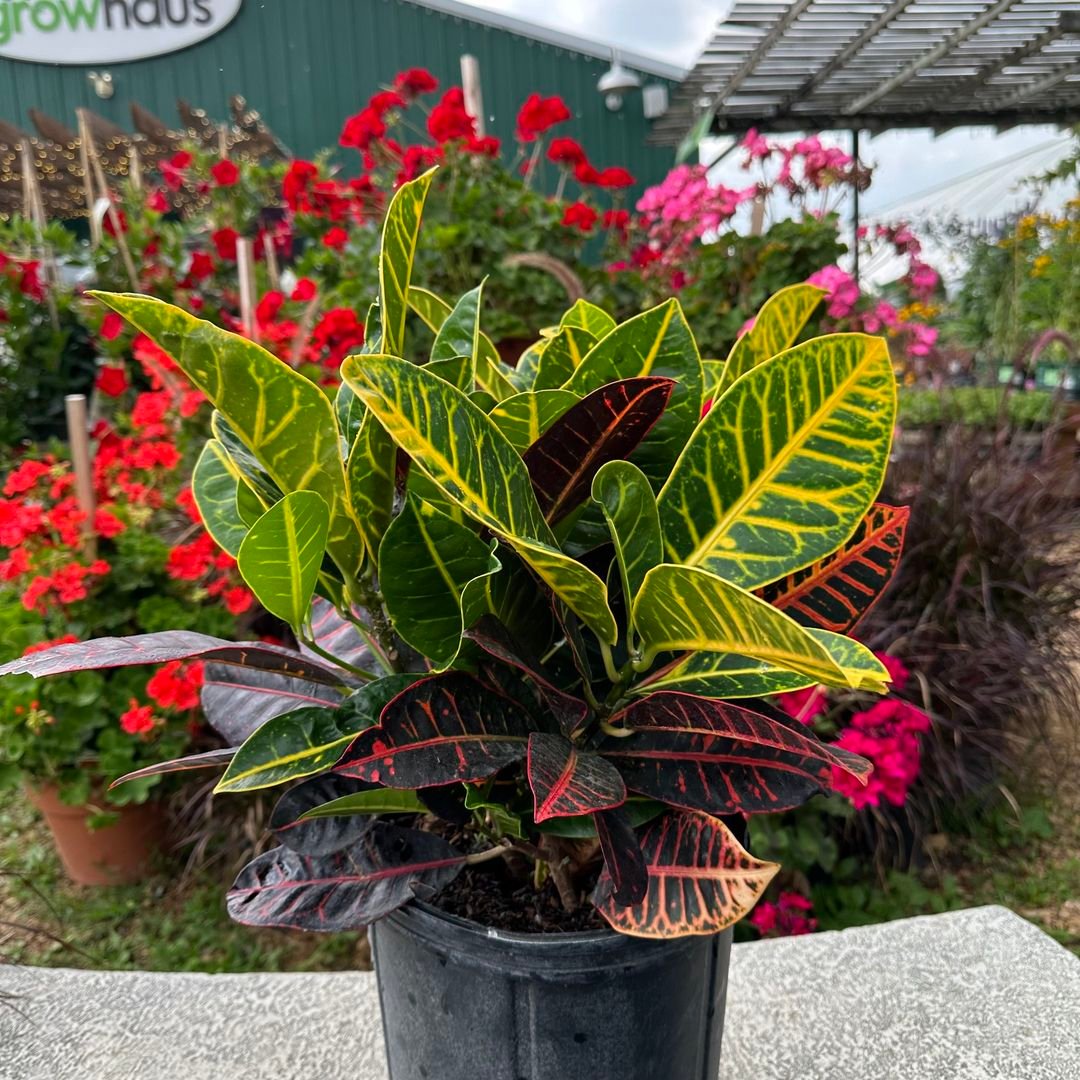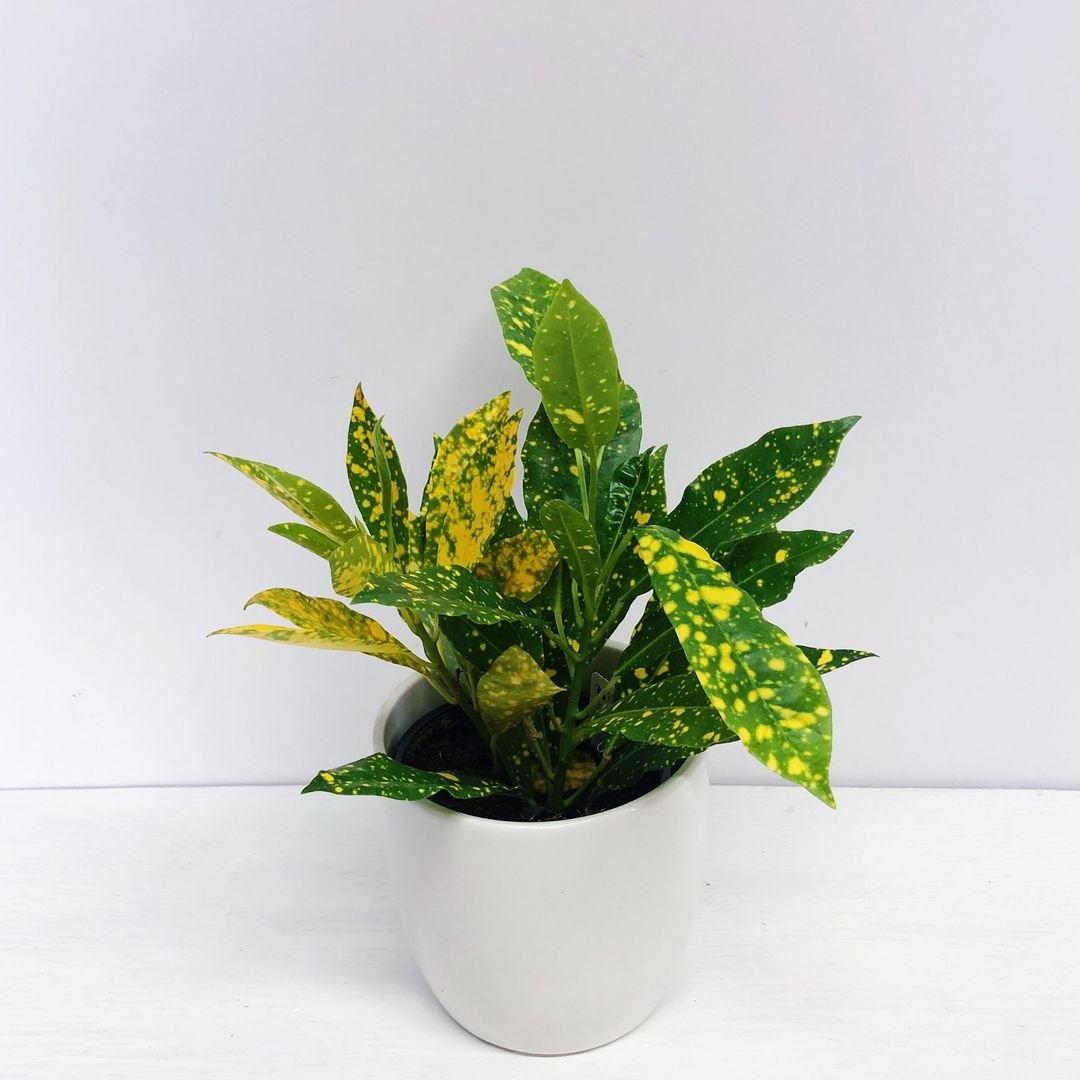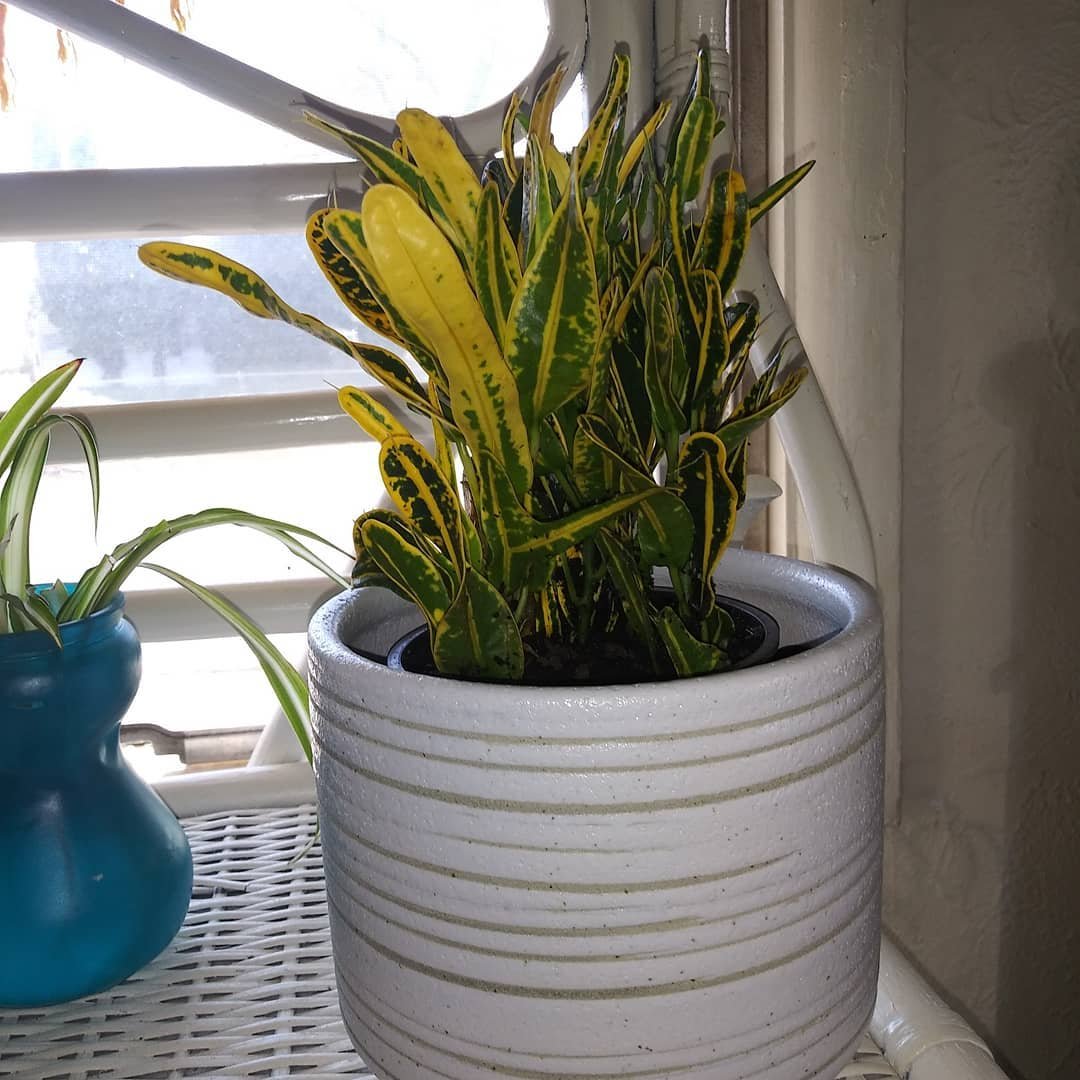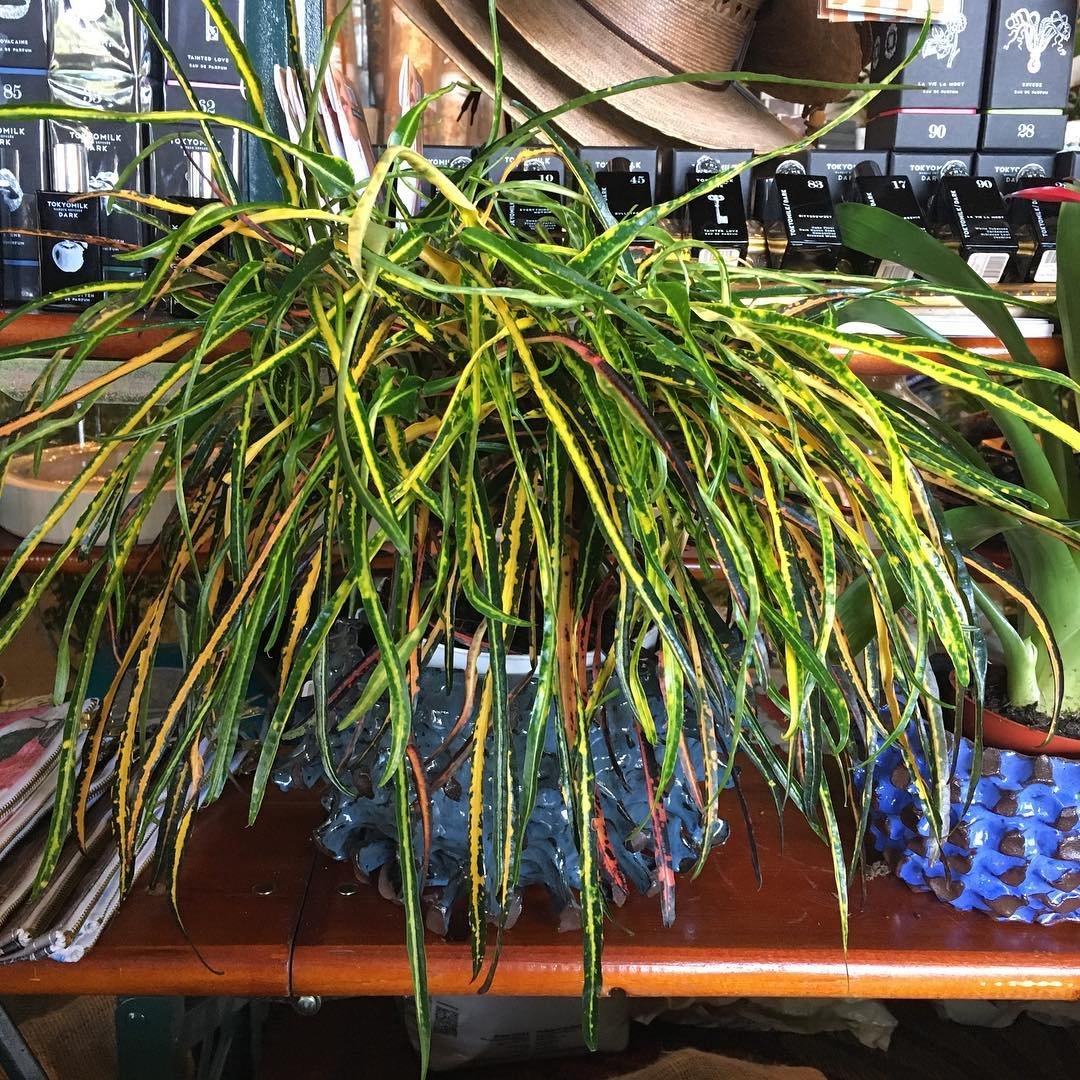Discover the diverse and stunning world of croton varieties. Learn about popular types, care tips and how to incorporate these colorful plants into your home or garden.
Crotons, known scientifically as Codiaeum variegatum, are tropical plants celebrated for their vibrant, multi-colored foliage. These eye-catching plants come in a wide array of varieties, each with unique leaf shapes, sizes and color combinations. In this guide, we’ll explore the diverse world of croton varieties and how to care for these living works of art.
Here’s an easy-to-read chart for Crotons:
| Category | Information |
|---|---|
| Botanical Name | Codiaeum variegatum |
| Common Name | Crotons |
| Plant Type | Evergreen Shrub, Houseplant |
| Hardiness Zone | USDA Zones 10–12 (indoor plant in cooler climates) |
| Sun Exposure | Bright, indirect light to full sun |
| Soil Type | Well-drained, fertile soil |
| Watering | Moderate; keep soil evenly moist |
| Growth Habit | Upright, bushy |
| Height/Spread | 3–6 ft tall / 2–3 ft wide |
| Special Features | Striking, colorful foliage, easy care, air-purifying, variety of leaf shapes and colors |
About Crotons
Crotons are native to Southeast Asia and the Pacific Islands. They’re known for:
- Brilliantly colored leaves in shades of green, yellow, orange, red, and even black
- Varied leaf shapes, from narrow to broad, twisted to curly
- Being popular as both indoor and outdoor plants in tropical and subtropical climates
Popular Croton Varieties
1. Petra Croton

- Large, oval leaves
- Colors: Green with yellow, red, and orange veining
- One of the most common varieties
2. Gold Dust Croton

- Small, narrow leaves
- Colors: Dark green splashed with bright yellow spots
- Compact growth habit
3. Mammy Croton

- Twisted, curled leaves
- Colors: Green, red, orange, and yellow
- Unique, spiral growth pattern
4. Banana Croton

- Long, narrow leaves resembling banana leaves
- Colors: Green with yellow veins, turning reddish with age
- Dramatic, arching growth habit
5. Eleanor Roosevelt Croton

- Oak-leaf shaped foliage
- Colors: Green with yellow and red splotches
- Named after the former First Lady
6. Zanzibar Croton

- Thin, long leaves
- Colors: Dark green with bright yellow veins
- Resembles a colorful grass
Growing Conditions for Crotons
To thrive, crotons need:
Light
- Bright, indirect light for vibrant colors
- Some direct morning sun can enhance leaf coloration
- Too much direct sun can scorch leaves
Temperature
- Prefer warm temperatures between 60-85°F (15-29°C)
- Cannot tolerate frost or prolonged cold
Soil
- Well-draining, rich potting mix
- Slightly acidic pH (6.0-6.5)
Humidity
- High humidity levels (50-80%)
- Mist regularly or use a pebble tray for indoor plants
Caring for Croton Varieties
Watering
- Keep soil consistently moist but not waterlogged
- Allow top inch of soil to dry between waterings
- Reduce watering in winter
Fertilizing
- Feed with a balanced, water-soluble fertilizer every 2-4 weeks during growing season
- Proper fertilization is crucial for maintaining vibrant colors
Pruning
- Prune to maintain shape and size
- Remove any dead or yellowing leaves
- Wear gloves, as croton sap can be irritating to skin
Repotting
- Repot every 2-3 years or when rootbound
- Choose a pot 1-2 inches larger in diameter
Common Problems and Solutions
Pests
Crotons can be affected by:
- Spider mites
- Mealybugs
- Scale insects
Solution: Use insecticidal soap or neem oil for organic pest control.
Diseases
Watch out for:
- Root rot (from overwatering)
- Leaf spot diseases
Solution: Ensure proper drainage and avoid overwatering. Remove affected leaves promptly.
Using Crotons in Your Space
Crotons can be used in various ways:
- As colorful focal points in indoor spaces
- In tropical-themed outdoor gardens in warm climates
- Mixed with other plants in container arrangements
- As natural “paintings” to add color to neutral-toned rooms
Their vibrant foliage makes them excellent choices for adding a pop of color to any setting.
Propagating Croton Varieties
You can propagate crotons through:
- Stem cuttings: Take 4-6 inch cuttings and root in water or moist soil
- Air layering: For larger plants or difficult-to-root varieties
- Seeds: Less common, as it doesn’t guarantee the same variety as the parent plant
Propagation techniques can help you expand your croton collection or share with fellow plant enthusiasts.
Choosing the Right Croton Variety
When selecting a croton variety, consider:
- Available light in your space
- Size of the mature plant
- Your color preferences
- Care requirements and your ability to meet them
Croton varieties offer a stunning array of colors and leaf shapes, making them a favorite among plant enthusiasts. Whether you’re drawn to the bold patterns of the Petra croton or the unique twists of the Mammy variety, there’s a croton to suit every taste and space.
Remember, while crotons can be somewhat demanding in their care requirements, the reward of their vibrant, ever-changing foliage is well worth the effort. With proper care and attention, these living artworks can bring a tropical touch and a burst of color to your home or garden for years to come.
Happy planting, and enjoy the colorful world of crotons!